Gardening for wildlife
The Tree Fuchsia
Text and photographs Charles and Julia Botha (or as credited)
At the end of the first article in this series we promised to feature some plants that will attract a variety of wildlife with different feeding requirements. We begin with one of our favorites, simply because it is such a multi-purpose tree. One of the best plants to attract nectar-eaters to the garden, the Tree Fuchsia (Halleria lucida), is also much frequented by fruit- and insect-eaters. Its orange to dark red, nectar-filled, tubular flowers hang on short stalks and are seen mainly in dense bunches on the trunk and old, woody branches. They are so full of nectar that Zulu speaking people refer to them as “birds’ beer”. Many insects and birds, such as sunbirds, white-eyes and weavers, constantly visit the tree adding to the already beautiful spectacle provided by the masses of flowers.
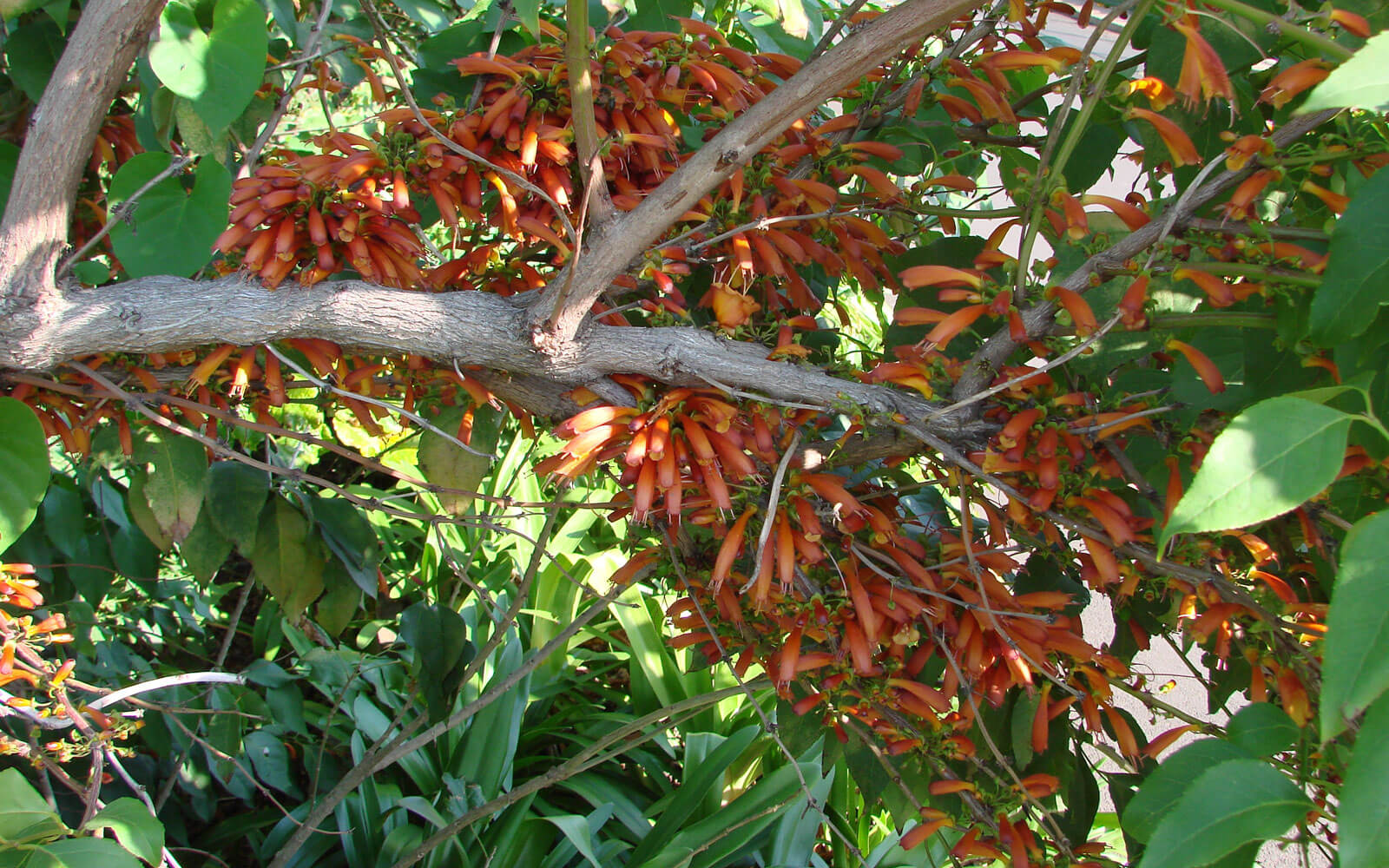
The flowers are mostly on woody branches
In nature, red, pink and bright orange flowers are mostly pollinated by birds which, other than being very sensitive to red, have colour vision somewhat similar to that of humans. Indigenous tubular flowers, such as those of H. lucida, are generally designed to be pollinated by sunbirds with long curved beaks, and a variety of these can often be seen hard at work at a flowering H. lucida doing just that! Other birds with shorter beaks “cheat”, piercing the flower near the base to get to the nectar without taking or leaving any pollen.
Once the flowers disappear, they are replaced by lots of fleshy berries, which start off green and then turn red before becoming purplish-black when ripe. Now it is the turn of the fruit-eaters, of which a wide variety can be expected, with taracos (louries) sometimes vociferously leading the pack. Even the Olive Thrush, which is more likely to be seen pulling earthworms out of the ground, regularly hops around feasting on the fallen fruit. Other birds simply feed on the insects attracted to the fruit, which is so abundant that in isiXhosa the tree is referred to as “free food”. As if all these advantages for the wildlife gardener were not enough, the flaky bark makes an ideal home for many tiny insects and other invertebrates, attracting yet another group of birds. These include woodpeckers that work their way up and down the fissured bark, the longitudinally grooved appearance of which makes it look as though it has been combed. In the wild the leaves are also browsed by game.
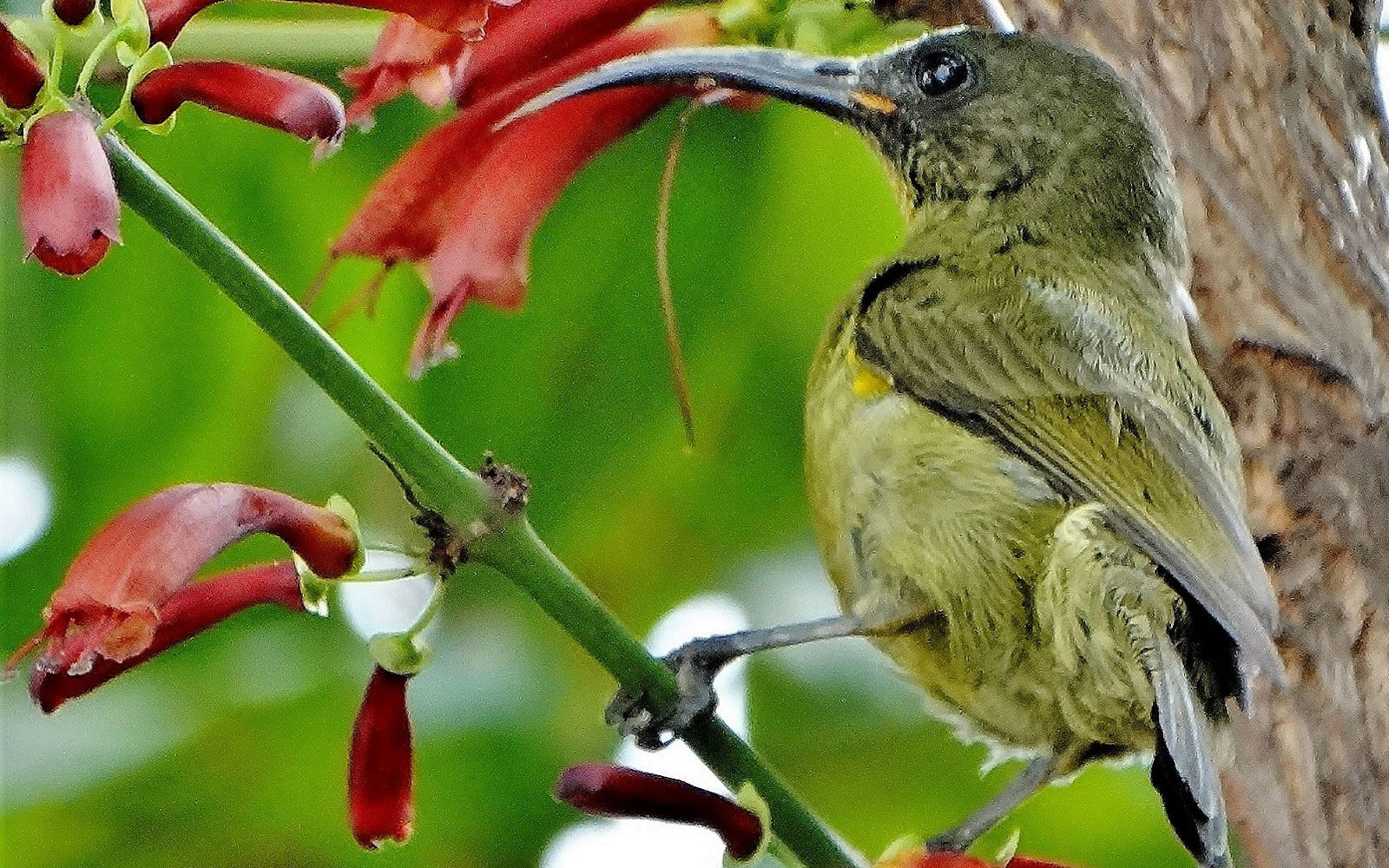
Besides Olive Sunbirds, no less than 15 other bird species have been recorded to gain sustenance from Halleria lucida.
Photo: P Vos
Although edible, the berries tend to dry the mouth and are not too tasty but, because children are often fond of them, the tree is sometimes referred to in Afrikaans as “Kinderbessie”. The name Notsung, which is more often used in the Cape than in the rest of the country, is of Khoekhoe derivation. Sometimes jokingly referred to as “Hilarious Lucy”, the plant’s species name lucida, meaning bright or clear, refers to the shiny, bright leaves. The genus, Halleria, is named after Albrecht von Haller who, in the 1700s, was a professor of Botany in the ancient Gothic town of Gottingen, home to one of Germany’s oldest and most respected universities.
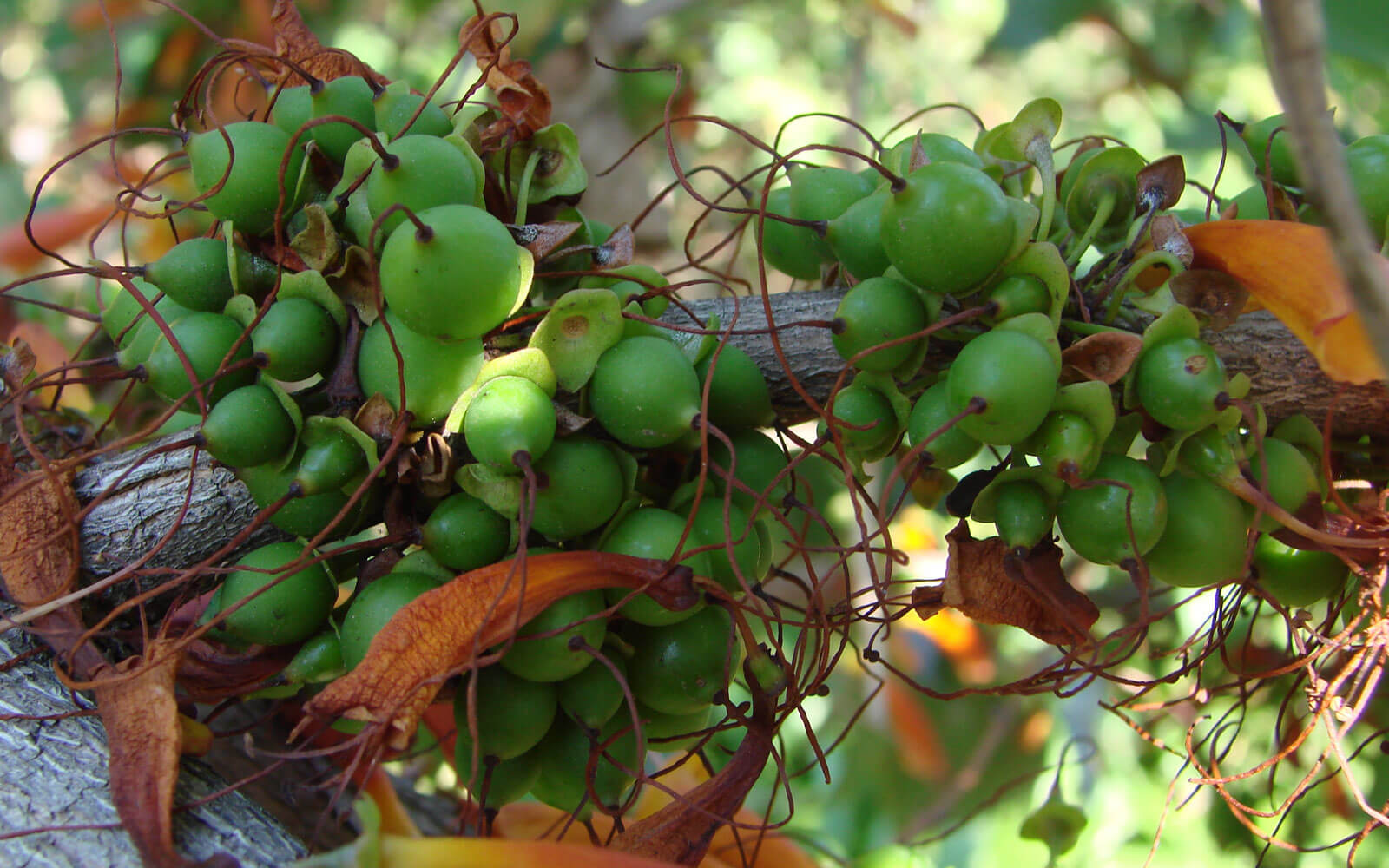
The flowers are followed by berries, which start off green and delight fruit-eaters once ripe
There are no records of butterfly larvae using H. lucida as a food plant, but it does host the caterpillars of at least a dozen species of moth. These include one with the intriguing common name of Indecorous Eggar (Bombycopsis indecora). The caterpillars of this moth should be treated with caution because of their stinging hairs, which are no problem for the Red-chested Cuckoo (Piet-my vrou) when feasting on them. H. lucida is also a food source for the larvae of some spectacular emperor moths. One of these, Wahlberg’s Emperor (Nudaurelia wahlbergii), is often drawn to lights at night. Another is the Variable Prince (Holocerina smilax), which is rarely attracted to lights and thus not often seen by the gardener during its nocturnal flights. However, this species of emperor moth can often be heard, as it flies extremely fast, making a whirring sound with its wings. Interestingly, these moths sham death when handled and can squirt a milky fluid to deter an aggressor!
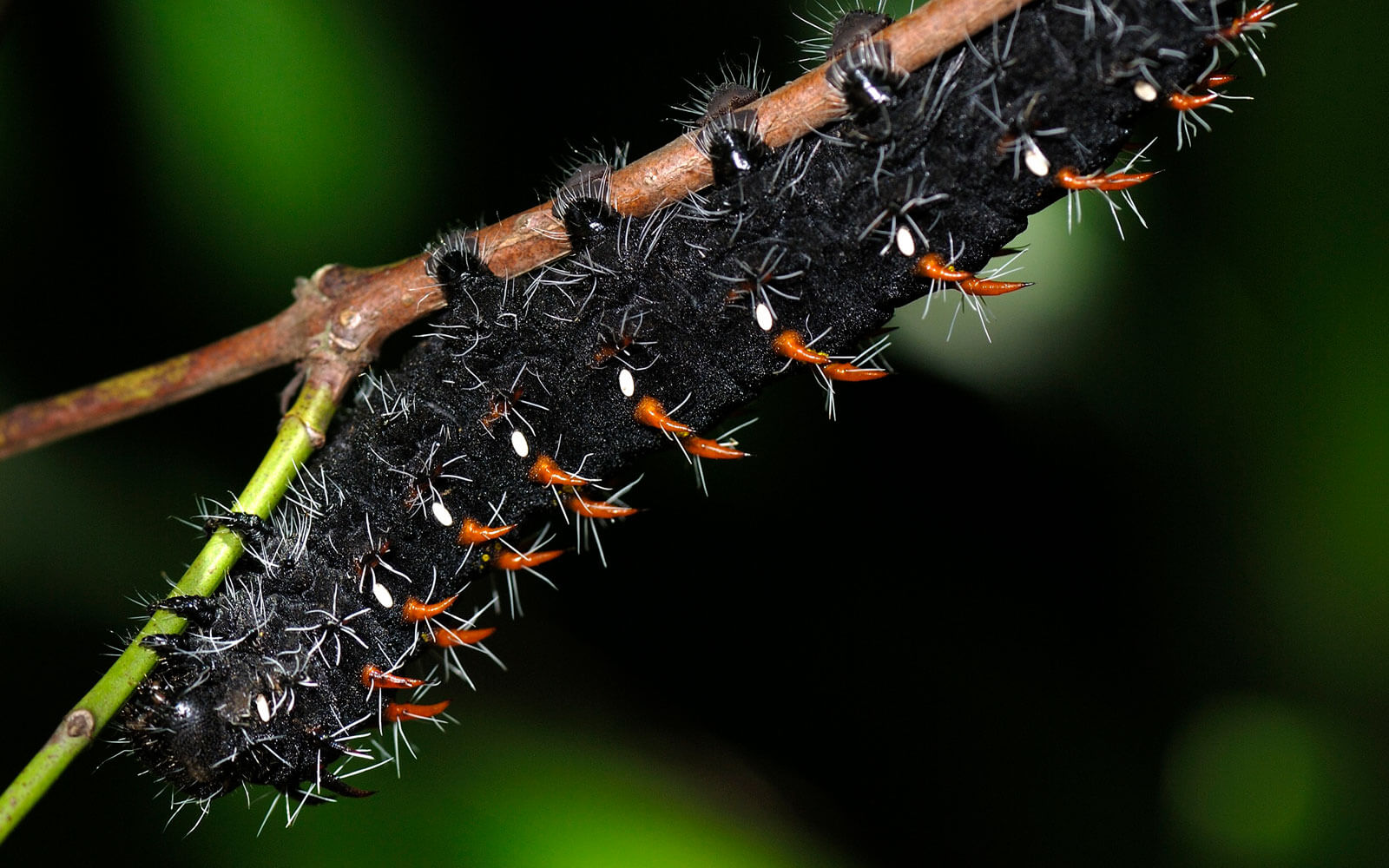
Halleria lucida is a host plant for the Wahlberg’s Emperor caterpillar. These caterpillars will also feed on several other indigenous plants such as Ekebergia capensis and Trema orientalis.
Photo: Steve Woodhall
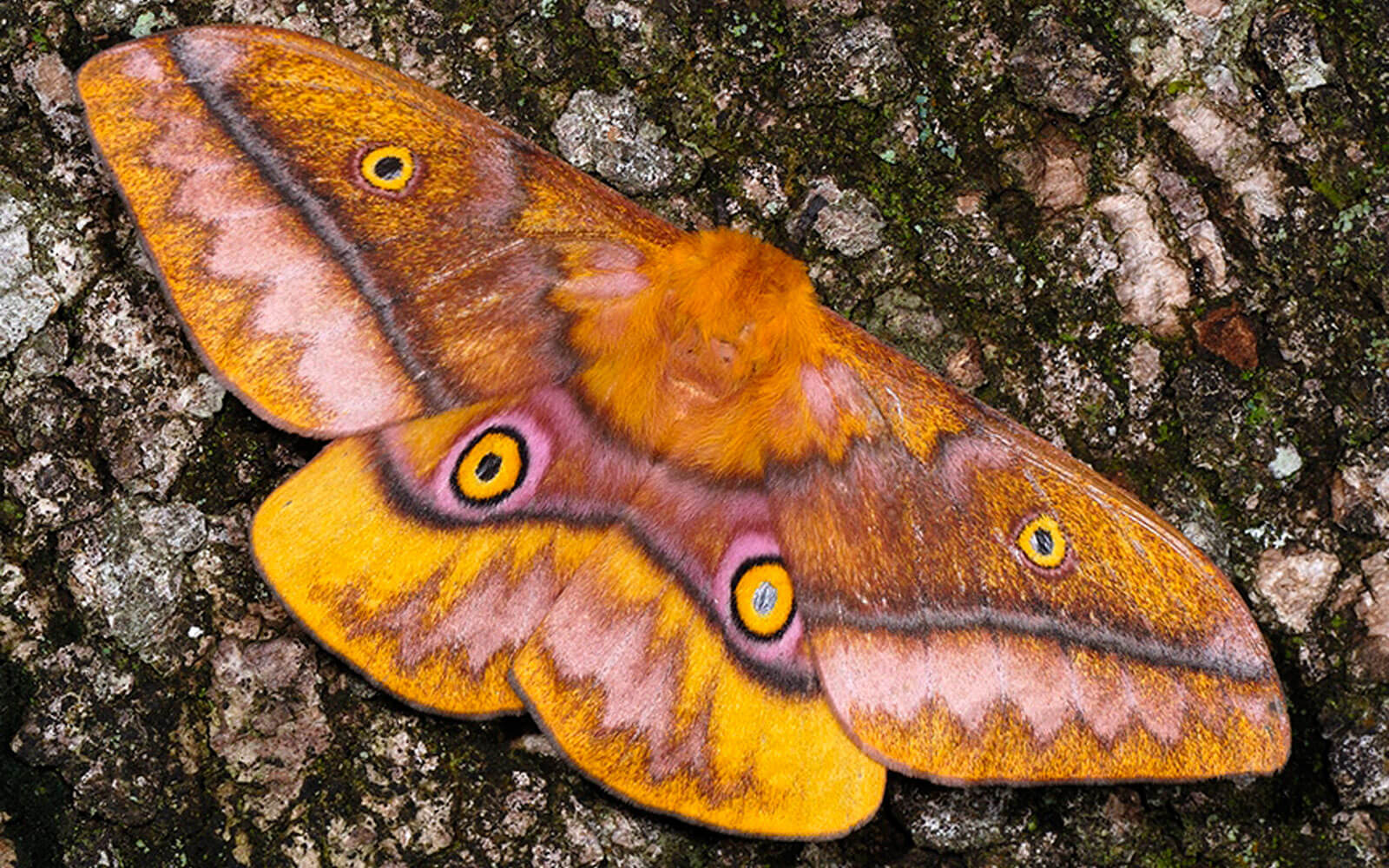
The adult Wahlberg’s Emperor moth also feeds on Halleria lucida.
Photo: Steve Woodhall
While it can be deciduous or evergreen, H. lucida is mostly semi-deciduous and is very variable in size, depending on growing conditions. In dry, shallow soil it becomes a relatively slow grower and remains a roundish shrub, especially if shaped by frost, which it can tolerate to a moderate extent. In contrast, in moist forest conditions, it is fast growing and can become a fairly tall tree. Single specimens of H. lucida have a drooping habit with a spreading crown but, because they are often multi-stemmed, they can be planted in rows and clipped to form a hedge or screen. The natural distribution area, which is from the Western Cape to tropical Africa, includes most of the eastern part of the country and, occurring from almost sea level to an altitude of over 2 200 meters, H. lucida is found as far inland as the Free State as well as in virtually the whole of Gauteng. It has two indigenous “cousins”, H. elliptica which is a shrub or dwarf shrub and H. ovata which is usually a shrub. While the former also occurs elsewhere in Africa, in this country both these species are restricted to small areas in the Western Cape.
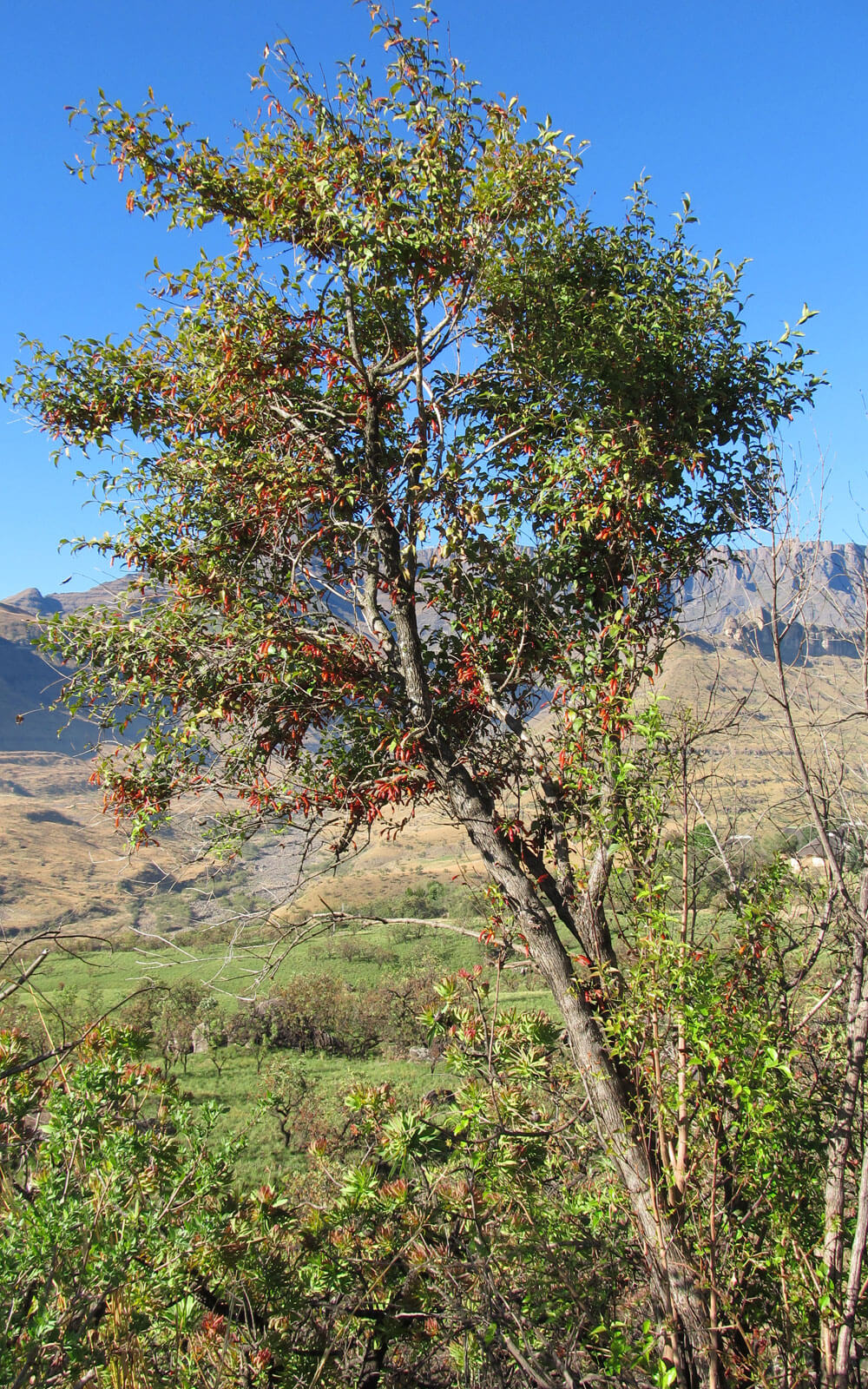
In cold and frosty areas, Halleria lucida usually remains a shrub or small tree.
Although H. lucida is readily available from indigenous plant nurseries, it can also easily be cultivated from cuttings or from the small seeds embedded in the jelly-like flesh of the fruit. In fact, it was one of the first of our indigenous trees to have been cultivated and was recorded as growing in the Government’s Gardens in Cape Town as early as 1811. At the time of the Battle of Waterloo in 1815, a specimen was already cherished in a greenhouse in England, but many South African gardeners have, even today, yet to discover this marvellous plant! While overseas commercial growers are exploiting a lucrative market cultivating and selling our natural treasures, local gardeners have generally opted for imported plants. Many of these foreign species have now become invasive alien plants. So unfortunately, there is always the chance that the pretty exotic flower in your garden is tomorrow’s environmental nightmare!
For example, who would have thought, in the days when the attractive Lantana (Lantana camara) was a prime garden subject, that it would become rated as one of the ten worst weeds in the entire world? As early as 1650, L. camara plants were being sent from tropical America to European gardens. Their showy flowers proved very popular with gardeners and nurserymen, and they were distributed to private and botanical gardens across the world. Unfortunately, in many countries to which they were introduced, they escaped from gardens, becoming noxious weeds. In South Africa, this horrific plant is classified as an alien invasive species and failure to remove it from your property is, in fact, a criminal offence.
First recorded in this country in 1858, L. camara is a compact, bushy shrub or untidy scrambler with leaves that have a strong, characteristic smell when crushed. The flowers, which are usually shades of pink or orange, are borne in clusters, often comprising flowers of several different colours. They are followed by fruits that become purple-black when ripe. The nectar-rich flowers are attractive to insects, including butterflies, but to tolerate it for this reason is like pardoning a serial killer on account of a charming smile! So aggressive is this invader that it can smother and kill fully-grown trees. Impenetrable thickets form within a short time at the expense of indigenous vegetation. Infestations in plantations severely hamper management operations and can place a financial burden on this sector of the economy.
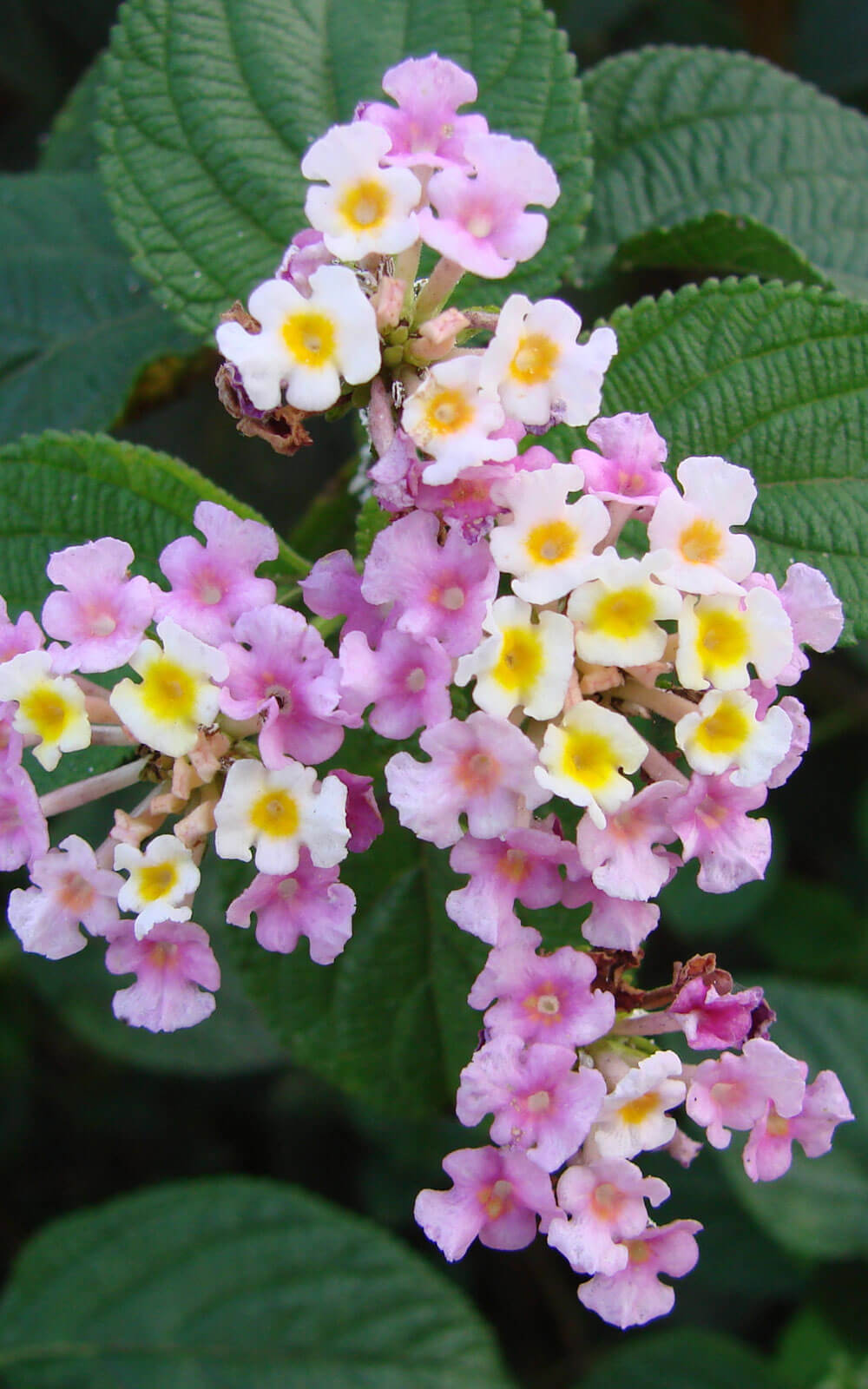
Lantana camara is an example of a dreadful problem plant, introduced as an ornamental to satisfy the whims of some gardeners.
This devil’s plant is poisonous to humans and domestic animals. People, particularly children, are known to have died after eating the fruit, and cattle have eaten the foliage with fatal results. However, L. camara should not be confused with the indigenous, harmless L. rugosa (Bird’s Brandy) which, in its own country, is unfortunately seen much less frequently than the invasive alien species. The local citizen is a very much smaller, delicate, aromatic little shrub, with pink to light purple flowers and purple, edible fruit.
Because the wood of H. lucida is hard and heavy it has been used, in some areas in the past, for spear shafts and to start fires by friction. Cattle enclosures have also often been constructed from it, as it is not readily attacked by termites. Traditionally the plant has been used for a variety of charms and medicinal applications. For example, in Zulu medicine it is a remedy for skin complaints and dried leaves are moistened and squeezed into the ear for earache. Xhosa mothers-to-be traditionally place parts of H. lucida in their clothing as charms to ensure the birth of a healthy baby while, according to Zulu folklore, a mixture of parts of the plant with crocodile fat will ward of lightning. Cynics may well speculate as to whether hunting crocodiles, with spears in days gone by, may have constituted a greater risk to life and limb than being struck by lightning!
Notes
Reprinted with permission from African Wildlife & Environment magazine issue # 79 (2021)
The journal of the Wildlife & Environment Society. Please support www.wessa.org.za

About the authors
Charles and Julia Botha are the authors of Bring Nature Back to your Garden of which the first edition won a University of KwaZulu-Natal book prize for popularising science. It explains the important conservation-friendly gardening principles in easy-to-understand, non-scientific language and has now been split into two editions: one for the western part of the country and another for the eastern and northern regions. There is also an isiZulu edition. Their follow up book Bring Butterflies Back to your Garden, describes over 500 recorded butterfly larval host-plants. All proceeds of their books go to the Botanical Education Trust, which funds research aimed at conserving South Africa’s indigenous flora. Please view the website botanicaleducationtrust.org.za. The books are available from the Flora & Fauna Publication Trust or request your local bookstore to stock them!